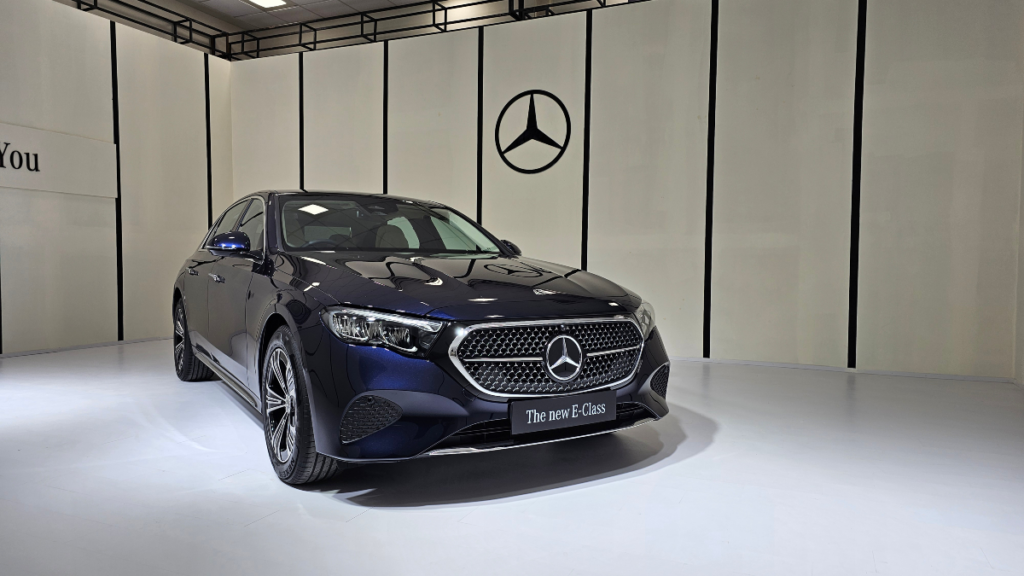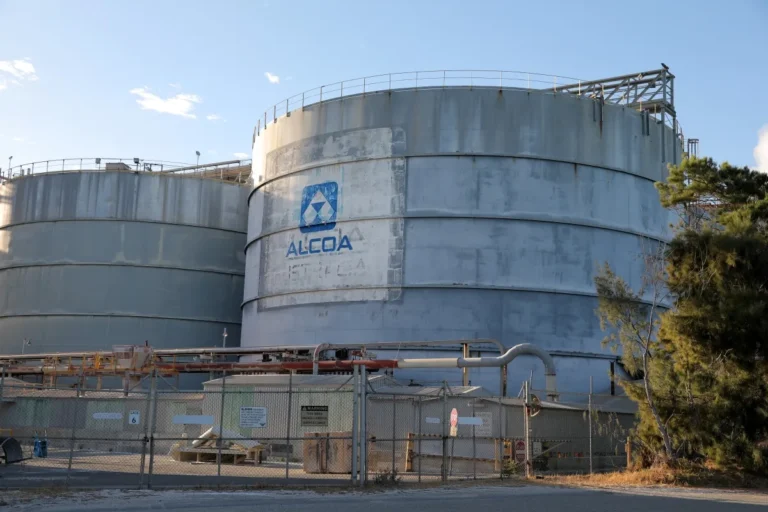
Mercedes-Benz Trucks Classic Brings Vintage Truck Icons to Life at “Tribute to Carl Benz” 2025 in Karlsruhe
On Sunday, May 4, 2025, Karlsruhe will once again serve as the stage for a captivating celebration of automotive heritage as Mercedes-Benz Trucks Classic takes center stage at this year’s “Tribute to Carl Benz.” Set against the historic backdrop of Karlsruhe Palace, the event is part of the city’s vibrant “Festival of the Senses,” a multi-faceted cultural celebration that blends technology, history, and public engagement. Within this context, Mercedes-Benz Trucks Classic is presenting a meticulously curated selection of ten historic commercial vehicles that span nearly a century of innovation, engineering excellence, and practical design evolution in the world of trucking.
From early 20th-century pioneers to post-war workhorses and the streamlined vehicles of the 1960s, each truck on display tells a compelling story—not only of mechanical progress but also of the changing needs of societies, industries, and transportation networks around the globe.
A Living Museum on Wheels at the Schlossplatz
Transforming the Schlossplatz into an open-air museum on wheels, Mercedes-Benz Trucks Classic is once again bringing its mechanical heritage directly to the public. Between 10 a.m. and 4 p.m., visitors will be able to stroll through the Ehrenhof—directly in front of Karlsruhe Palace—and encounter vintage commercial vehicles up close. Staffed by experts from Mercedes-Benz Trucks Classic, the event offers more than static displays: it invites conversation, storytelling, and shared passion.
From seasoned automotive enthusiasts to families exploring the festival, everyone attending will have the chance to interact with these trucks in a dynamic way. Whether it’s through learning about technical details, exploring original design features, or understanding how each truck served in different roles—ranging from fire rescue to global export—the exhibition offers layers of discovery for all ages.
A Cross-Section of Commercial Vehicle Evolution
Mercedes-Benz Trucks Classic has selected ten trucks for the 2025 event that together illustrate the brand’s far-reaching impact across both geography and industry. These are not merely vehicles—they are time capsules, each embedded with a slice of commercial and industrial history.
Among the standout exhibits is the L 4500, a robust pre-war design that saw later use in far-flung regions such as Nigeria. Known for its reliability and rugged engineering, the L 4500 played a key role in transporting goods in challenging environments. Its continued presence in postwar settings underscores the durability of Mercedes-Benz engineering and the global relevance of its truck platforms.
Standing beside it is the unmistakable LP 1519, a model that embodies the design ethos of the 1960s and early 1970s. Its cube-shaped cab—a radical departure from previous curved designs—offered improved driver comfort and a more spacious interior. This model was a defining symbol of the medium-duty commercial truck sector and illustrates how Mercedes-Benz adapted its vehicles to meet the emerging logistical needs of an urbanizing post-war Europe.
Firefighting Icons: Preserving Emergency Service Heritage
Two of the trucks on display hold particular significance for emergency services history: the LAF 710 and the L 6600, both fire-fighting vehicles that played essential roles in their respective communities.
The LAF 710 is a standout example of purposeful preservation. Used by the Robert Bosch plant fire department in Stuttgart until 2005, this vehicle remains unrestored but remarkably intact. It is not only a testimony to its build quality but also a rare glimpse into a functional emergency vehicle that retains its authentic condition after decades of service.

Meanwhile, the L 6600 with its firefighting superstructure adds a layer of historical value as a representative of the post-war industrial boom when the need for reliable, powerful emergency response vehicles surged. With its imposing dimensions and powerful engine, the L 6600 demonstrates how Mercedes-Benz vehicles were adapted to meet life-saving demands.
A Design Revolution: The “Advent Calendar” Truck and Early Front-Wheel Drive
Among the most visually engaging vehicles on display is the LP 1620, affectionately nicknamed the “Advent Calendar.” This nickname comes from the numerous small maintenance flaps integrated into its cabin, each opening like a calendar window to reveal internal components. Introduced in the late 1960s, the LP 1620 represented a leap forward in driver ergonomics, offering low engine tunnels and panoramic glass for increased visibility.
This innovation was more than aesthetic—it was functional. The spacious cabin and enhanced access for maintenance were aimed at reducing driver fatigue and improving fleet efficiency, goals that still resonate in modern truck design today.
The LP 323, another gem on display, exemplifies Mercedes-Benz’s early experiments with front-wheel-drive platforms. Launched in the mid-1950s, this model brought a fresh perspective to cabin comfort and layout. The “P” in its designation stands for “Pullmann,” a term borrowed from the luxurious train carriages of the same name. This reference highlights the company’s aim to redefine commercial truck interiors to offer enhanced comfort, reinforcing its commitment to driver wellbeing even during long hauls.
Bridging Wartime and Peacetime: The Evolution of the L 5000
The L 5000, a post-war evolution of the wartime L 4500, offers a unique lens through which to view the transformation of commercial transport during the 1950s. It retained the structural integrity and performance characteristics of its predecessor while embracing more modern visual cues. With rounded radiator shapes, streamlined bumpers, and revised side hood flaps, the L 5000 exemplified the shift from utilitarian wartime austerity to a peacetime focus on efficiency, longevity, and comfort.
Powered by a six-cylinder pre-chamber diesel engine capable of generating 120 horsepower, the L 5000 was one of the first commercial trucks that actively considered both technical performance and design aesthetics. Built at the Mercedes-Benz plant in Gaggenau, this model served as a foundation for later variants like the L 334, which was produced for export well into the 1960s.
Bookends of Innovation: From Benz 1 CN to LP 608
The journey through time is marked by two particularly symbolic vehicles at this year’s event: the Benz 1 CN from 1922 and the LP 608 from 1965. These models serve as chronological bookends, offering visitors a view of where motorized goods transport began and how it matured by the mid-20th century.
The Benz 1 CN, the oldest exhibit at this year’s show, is a remarkable piece of automotive history. With a four-cylinder S 100 petrol engine delivering 35 horsepower and a displacement of 4,710 cm³, it might seem modest by today’s standards. But in 1922, it was a groundbreaking machine, providing an alternative to horse-drawn wagons and revolutionizing urban logistics. As one of the early post-merger products of the Benz & Cie legacy, it represents the roots from which Mercedes-Benz’s commercial division grew.
At the other end of the timeline is the LP 608, a compact front-wheel-drive platform truck that entered series production in 1965. Fitted with the OM 314 diesel engine, this truck featured direct fuel injection, an 80-horsepower output, and a five-speed transmission that allowed it to reach speeds of up to 80 km/h. What makes the LP 608 even more historically significant is its role in inaugurating production at Mercedes-Benz’s Wörth plant—the company’s largest truck manufacturing facility today. On July 14, 1965, the first vehicle to roll off the Wörth assembly line was an LP 608 in this very configuration.
This vehicle symbolizes a pivot point in the company’s history, marking the transition from artisanal production to modern assembly-line manufacturing. Compact yet powerful, the LP 608 reflects the rising need for urban commercial vehicles during the 1960s and stands as a forerunner to the light-duty trucks we see in city centers today.
Educational Encounters and Personal Stories
The “Tribute to Carl Benz” is more than just a visual celebration—it’s an educational journey. The event is staffed by experts from Mercedes-Benz Trucks Classic who offer visitors the chance to delve deeper into each vehicle’s history and mechanics. These specialists don’t just recite facts—they share personal stories, restoration experiences, and behind-the-scenes insights that add a deeply human element to the mechanical marvels on display.
Visitors of all backgrounds will find something to appreciate: families can engage children with the storytelling aspect of each vehicle’s role; engineering enthusiasts can ask about drivetrains, transmission systems, or design rationales; and casual observers can simply enjoy the harmony of form, function, and legacy.
A Tribute Rooted in Innovation and Legacy
The annual “Tribute to Carl Benz” is more than just a commemorative festival—it’s a reaffirmation of Germany’s engineering legacy and Karlsruhe’s role in automotive history. As the birthplace of Carl Benz, the city has every reason to celebrate its ties to the automobile’s invention, and Mercedes-Benz Trucks Classic contributes significantly to this cultural narrative.
By presenting trucks that have served across decades and continents—trucks that have put out fires, moved goods across nations, and defined industrial eras—Mercedes-Benz shows that its heritage is not frozen in time. Rather, it is a living, breathing part of its identity. The company doesn’t just preserve these vehicles for nostalgia; it presents them as evidence of lessons learned, innovations trialed, and challenges overcome.
As Mercedes-Benz Trucks Classic rolls into the Schlossplatz once again this May, it does so not only to honor the memory of Carl Benz but to inspire future generations of engineers, designers, and transportation specialists. The vehicles on display serve as a reminder that every innovation we take for granted today was once a daring leap into the unknown. They also reaffirm that history, when preserved thoughtfully and presented engagingly, can inform and guide the road ahead.
From Nigeria to Stuttgart, from fire stations to factory lines, from 35 to 120 horsepower—the trucks of Mercedes-Benz carry more than cargo. They carry legacy.




